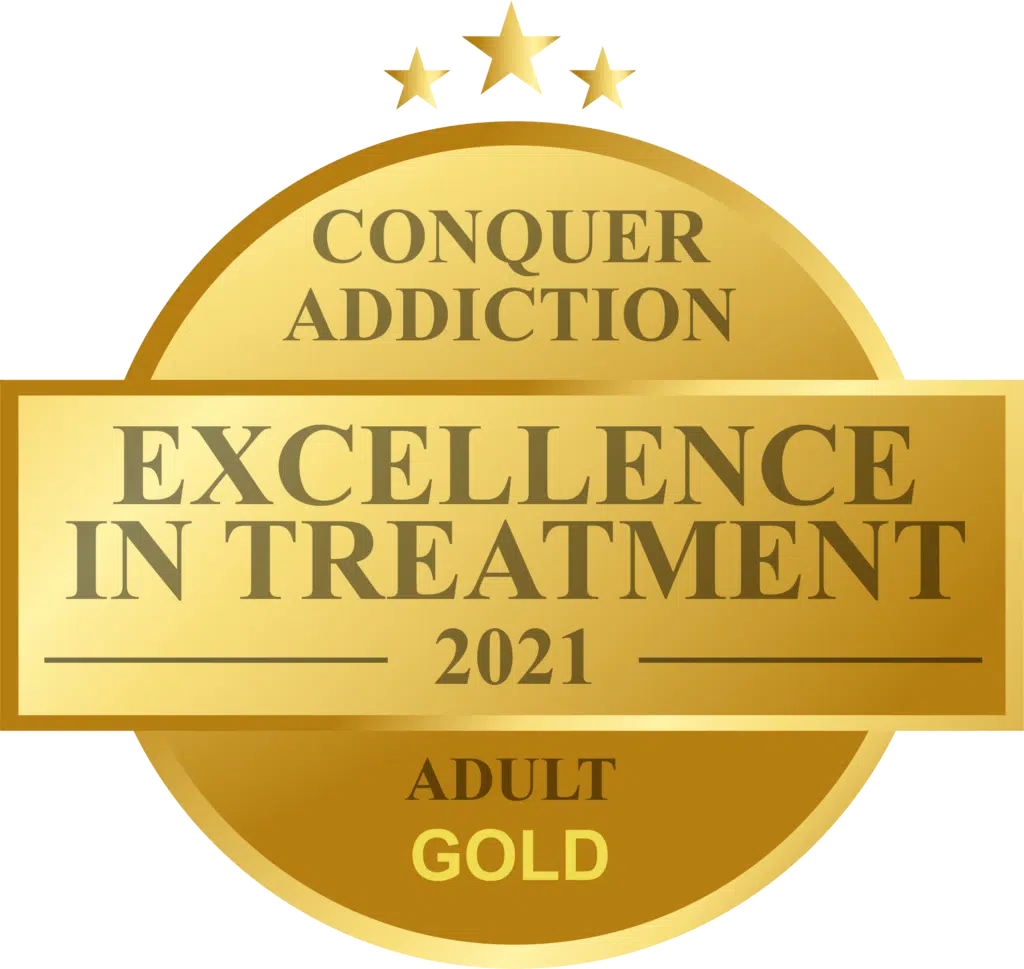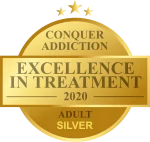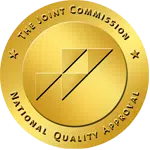© 2024 Aton Center | Privacy Policy | Terms of Use | Accessibility Statement | Grievance process | California Addiction Recovery | DHCS Licenses | Sitemap
People who are struggling with a substance use disorder—an addiction to alcohol or other drugs—often feel lonely and isolated. It’s for this reason that a person’s community plays such a vital role in recovery from addiction.
Establishing healthy relationships is a powerful way to enhance the path of healing. It can facilitate recovery by satisfying the fundamental human need for love and belonging. Nourishing connections also helps dissolve feelings of shame, stigma, and rejection—and helps the person recovering from addiction to feel less isolated and alone.
A healthy connection to oneself, others, and a higher power is key to healing from addiction. For people suffering from a substance use disorder—and for their loved ones—this page provides in-depth information about the importance of such relationships.
Relationships & Community in SUD Recovery
Numerous scientific studies have confirmed the importance—for people recovering from addiction—of cultivating positive relationships and protecting against the influence of negative relationships. Caring relationships with friends, partners, colleagues, siblings and healthcare providers can go far in supporting the recovery process and maintaining lasting sobriety. 1
Why are such relationships so important? One reason is that people with substance use disorders often have fewer social support networks than people without SUDs.2
In addition, people struggling with SUD (especially alcohol use disorder) frequently experience marital problems, which disrupts the connection with their spouse. 3 And people struggling with substance use disorder are often victims of domestic violence and experience the social isolation associated with the cycle of abuse. 4
The good news, once again, is that a variety of studies have shown that nourishing and supportive relationships with family members, partners, and friends (including individuals who do not use substances themselves) are extremely helpful in recovery from addiction and establishing lasting sobriety. 5 and 6
So, a person’s ability to change the unhealthy behaviors associated with substance misuse depends not only upon their intention, courage, honesty, and commitment. It also depends upon the support of healthy connections and social support networks.
Get in Touch
What are the Four Pillars of Recovery?
Healing from a substance use disorder—and overcoming the sense of isolation and loneliness that often accompanies addiction—requires support. Without creating the right foundation for recovery, it’s much more difficult for a person to recover fully and avoid relapsing into substance abuse in the future.
Four Dimensions of Addiction Recovery
According to the Substance Abuse and Mental Health Services Administration (SAMSA), the four pillars which can successfully support long-term addiction recovery are health, home, purpose, and community. 7
Each pillar is described as follows:
-
1. Health
This pillar of recovery includes making well-informed choices that support physical and emotional well-being and resolving or managing any existing disease conditions.
-
2. Home
This means having a safe and stable place to live.
-
3. Purpose
This pillar involves cultivating the income, resources, and independence necessary to participate meaningfully in society; for instance, via a job/profession, being in school, volunteering, caring for a family or engaging in creative endeavors.
-
4. Community.
This pillar includes cultivating relationships and social networks that provide support, friendship, love, and hope. Being in a community can provide the necessary encouragement for a person in recovery when they’re feeling apathetic and unmotivated. It can help lift their spirits and keep them on track between counseling sessions or 12-Step meetings.
Does Connection Help Recovery?
Community and connection—the fourth pillar of recovery—plays a vital role in healing from addiction. Healthy relationships provide physical, mental, emotional, and social contact and healing. Discovering common interests, laughing together, sharing and empathizing with one another’s emotional challenges, celebrating together, and simply feeling comfortable in each other’s presence—are some of the gifts that healthy human connection brings.
Healthy relationships can also be a motivating factor to encourage a person to change: to release limiting beliefs and destructive habits, including a substance use disorder. Nourishing relationships can help resurrect self-worth and confidence. With such support, it may become newly possible to take an active role in creating deep change.
Connection not only supports psychological healing. It’s also been proven to be vital to physical health and wellness (the first pillar of healing).
One research study—by psychology and neuroscience professor Julianne Holt-Lunstad—found that social isolation carries the same physical health risk as smoking 15 cigarettes per day! Social isolation was also shown to be twice as harmful as obesity, and just as lethal as alcoholism. 8
This study revealed that people with strong social bonds are 50% less likely to die over a given period than those who have fewer social connections. 9 The bottom line is that social connection is as necessary for physical health and well-being as it is for psychological health.
For individuals who have spent a long time on their own or are surrounded mostly by people who reinforce and enable their addiction, reaching out to others and creating healthier connections may initially feel difficult. But cultivating more positive relationships will greatly support the recovery progress, in ways they may never have imagined.
Who Should I Be Connecting With?
Connections to self, others, and a higher power are all important. People in recovery thrive when they make close connections that help end feelings of isolation. Staying connected is an essential part of maintaining long-term sobriety.
Connect with Yourself
Turning inward, to see oneself with honesty and integrity is an important first step on the path to healing from addiction. Authentic self-exploration and self-discovery allow the person struggling with a substance use disorder to begin to observe and acknowledge their dysfunctional thoughts, feelings, and behaviors.
Rather than ignoring or rejecting or being in denial about these mental, emotional, and physical habits, they learn to observe them with kindness, compassion, and unflinching honesty. This type of deep self-reflection takes courage. It’s also a necessary step on the path of healing and transformation.
Be Self-aware
With increasing self-awareness, the person recovering from addiction also begins to discover their true needs and interests; likes and dislikes; beliefs and values. They tap into what they're naturally enthusiastic about. They gain insight into what causes pain/suffering, and what makes them genuinely happy.
Focus on Yourself
Focusing on oneself in this way is not an act of selfishness. In fact, this type of focus is an act of wisdom and self-love. It allows the person to find out who they are at the core of their being—which sets the stage for healthy connections with others. To support the process of connecting deeply with oneself, mindfulness and meditation are great resources. Mindfulness and meditation are often the cornerstones of recovery from drug and alcohol abuse.
The many physical and emotional benefits of a regular meditation practice include: 10
Relating more skillfully to stressful situations
Alleviating anxiety and depression
Increased self-awareness
More fully enjoying the present moment
Replacing negative with positive self-talk
Enhanced imagination and creativity
Improved concentration
Increased patience and tolerance
Lower heart rate
Reduced blood pressure
Reduced blood pressure
Studies have also shown that mindfulness-based interventions (such as mindfulness-based cognitive therapy) effectively support recovery from addiction. They do this by transforming cognitive, affective, and psychophysiological processes that are integral to self-regulation and reward processing. 11
By connecting deeply to themselves, the person recovering from addiction nourishes a kind of presence—which, in turn, gives birth to effortless joy, enthusiasm, contentment, and a passionate flowering of their true interests. It also gives rise to the ability to connect in healthy ways with other people.
Connect with Others
Humans have a deep need to bond with one another and develop close relationships. Building connections with other people—through conversation, friendly physical affection, therapeutic touch (e.g., massage therapy), or a shared professional or recreational interest—creates a sense of community. This kind of healthy human connection enhances the path of healing from addiction.
Whether it’s a 12-Step program or the other participants in a residential treatment therapy group, or a network of trusted friends and family members—healthy relationships support the recovery process and help to stabilize sobriety.
The support of family and friends is essential for living a sober life. It is also important for people in recovery to connect with their peers who are also sober. Many people are able to stay sober due to the connections they make in 12-Step programs or other support groups.
-
Feel-Good Hormones
-
The joyful ease and relaxation that comes from bonding with a social group—or with just a couple of good friends—correlates with the release of feel-good hormones in the brain. Hugging and other kinds of nonsexual touching activate the release of oxytocin: the so-called “bonding hormone.” And this stimulates the release of other feel-good hormones such as dopamine and serotonin. And, at the same time, it reduces the level of stress hormones such as cortisol and norepinephrine.
In other words, healthy relationships and nourishing biochemistry reinforce one another, along the path of healing from substance use disorder. These healing relationships are essential for long-term recovery.
-
Mirror Neurons
-
Mirror neurons are a type of brain cell that responds equally when a person performs an action themselves—and when they only witness someone else performing the same action. In this way, mirror neurons support the process of learning through imitation. 12
These specialized neurons allow people to respond not only to their internal states or immediate physical environment but also to the actions and emotional states of other people that are nearby. The activity of mirror neurons helps explain empathy—knowing directly how someone else is feeling. It also helps explain how people can learn from others—almost by osmosis—simply by being in their presence.
Group therapy is often seen as a key to recovery from addiction. Skillfully facilitated groups provide positive emotional reinforcement as well as education and healthy connections. Experts now believe that this feeling of shared resonance and mutual support within a therapy group is linked, at least in part, to the activation of the mirror neuron system. 13
The mirror neuron system can drive a person to repeat unhealthy habits just as easily as it can motivate them to adopt a healthier lifestyle. Hence, the importance of forming positive nourishing relationships with people devoted to healing and sobriety.
-
Attachment Theory
-
Human beings are hardwired to form intimate emotional bonds with other people. According to psychological attachment theory, this need for social connection is vitally important to a person’s survival and happiness. The quality of these attachments also determines how they experience stressful circumstances. 14
People with healthy secure attachment patterns (as opposed to anxious, avoidant, or disorganized patterns) can cultivate and maintain healthy relationships. They’re comfortable expressing emotions openly. They can depend upon their friends/partners and in turn, let their friends/partners rely upon them.
A person with a secure attachment pattern is likely to have a regulated nervous system. This means that they generally feel safe and relaxed—and can share their sense of calm and ease with another person whose nervous system may be spiraling into “fight or flight or freeze” mode, with lots of agitation or anxiety.
Being in close contact with people whose nervous systems are regulated can be of great benefit to a person recovering from addiction.
In the presence of such a person, heart rate, blood pressure, and hormones can be stabilized, and the “rest and digest” function of the parasympathetic nervous system is restored. Physical and emotional stress is released. The immune system is strengthened. Self-esteem is naturally enhanced.
The bottom line is that healthy attachments—nourishing connections with other people—support both physical and psychological well-being. For people recovering from substance use disorders, such connections provide vital support for the healing process.
The joyful ease and relaxation that comes from bonding with a social group—or with just a couple of good friends—correlates with the release of feel-good hormones in the brain. Hugging and other kinds of nonsexual touching activate the release of oxytocin: the so-called “bonding hormone.” And this stimulates the release of other feel-good hormones such as dopamine and serotonin. And, at the same time, it reduces the level of stress hormones such as cortisol and norepinephrine.
In other words, healthy relationships and nourishing biochemistry reinforce one another, along the path of healing from substance use disorder. These healing relationships are essential for long-term recovery.
Mirror neurons are a type of brain cell that responds equally when a person performs an action themselves—and when they only witness someone else performing the same action. In this way, mirror neurons support the process of learning through imitation. 12
These specialized neurons allow people to respond not only to their internal states or immediate physical environment but also to the actions and emotional states of other people that are nearby. The activity of mirror neurons helps explain empathy—knowing directly how someone else is feeling. It also helps explain how people can learn from others—almost by osmosis—simply by being in their presence.
Group therapy is often seen as a key to recovery from addiction. Skillfully facilitated groups provide positive emotional reinforcement as well as education and healthy connections. Experts now believe that this feeling of shared resonance and mutual support within a therapy group is linked, at least in part, to the activation of the mirror neuron system. 13
The mirror neuron system can drive a person to repeat unhealthy habits just as easily as it can motivate them to adopt a healthier lifestyle. Hence, the importance of forming positive nourishing relationships with people devoted to healing and sobriety.
Human beings are hardwired to form intimate emotional bonds with other people. According to psychological attachment theory, this need for social connection is vitally important to a person’s survival and happiness. The quality of these attachments also determines how they experience stressful circumstances. 14
People with healthy secure attachment patterns (as opposed to anxious, avoidant, or disorganized patterns) can cultivate and maintain healthy relationships. They’re comfortable expressing emotions openly. They can depend upon their friends/partners and in turn, let their friends/partners rely upon them.
A person with a secure attachment pattern is likely to have a regulated nervous system. This means that they generally feel safe and relaxed—and can share their sense of calm and ease with another person whose nervous system may be spiraling into “fight or flight or freeze” mode, with lots of agitation or anxiety.
Being in close contact with people whose nervous systems are regulated can be of great benefit to a person recovering from addiction.
In the presence of such a person, heart rate, blood pressure, and hormones can be stabilized, and the “rest and digest” function of the parasympathetic nervous system is restored. Physical and emotional stress is released. The immune system is strengthened. Self-esteem is naturally enhanced.
The bottom line is that healthy attachments—nourishing connections with other people—support both physical and psychological well-being. For people recovering from substance use disorders, such connections provide vital support for the healing process.
Connect with Spirituality
Along with connecting with oneself and with other people, cultivating a spiritual connection is a vital component of healing from addiction.
The importance of spiritual connection is reflected in 12-Step programs of all kinds, which encourage participants to connect with a higher power. This higher power can be anything that the person recovering from a substance use disorder resonates with.
The individual may name this higher power as God, Source, Tao, Buddha, Nature, Consciousness, Allah, Brahman, or Pure Awareness. Alternatively, a person may consider music, mathematics, science, existential freedom, life-force energy, or their 12-Step group or sponsor to be their higher power.
Benefits of a Spiritual Connection
In any case, when a person connects with a higher power—with something more foundational than the egoic self—it allows for a different kind of understanding of life events. An individual who has surrendered to a deeper wisdom and more all-encompassing spiritual power can more easily release the limited contracted attempts to “be in control” of their addictive patterns.
Releasing egoic control allows for true, humble, and courageous responsibility to emerge. It allows the person recovering from addiction to acknowledge their dependence upon others, to successfully recover.
The spiritual connection provides a true refuge and source of lasting peace and happiness. It empowers true healing. Connecting with a higher power shows that there’s so much more to life than a person’s past mistakes, personal flaws, and unnecessary suffering. It allows the person in recovery to surrender to each moment, let go of old patterns, and cultivate healthier ways of being.
Spiritual connection reminds a person that they are loved unconditionally, and worthy of nourishment, protection, and lasting happiness.
Surrendering to a higher power opens a space of serenity, humility, and gratitude. It provides access to deeper wisdom and clarity. It sparks compassion for self and others. All this enhances the path of healing.
Make Connections at AToN in San Diego
AToN is a luxury drug treatment facility serving San Diego residents as well as people recovering from addiction from across the country. There are many treatment options that we suggest for people struggling with substance abuse.
Treatment options for substance use disorder include:
Medically assisted detox
Residential treatment
Individual and group therapy
12-step and 12-step alternative community support groups
Aftercare
Treatment for All Aspects of Health
The AToN team believes in treating the whole person: body, mind, and spirit. Skilled practitioners employ evidence-based treatment modalities along with holistic healing therapies to provide the most comprehensive level of healing.
Residents choose holistic therapies such as massage, acupuncture, hypnotherapy, yoga, physical therapy, and personal training to support their healing journey. Other activities include sound bowl healing, breathwork, meditation, hiking, boot camp, yoga, and painting class.
What to Expect at Our Treatment Center
The AToN center is located in beautiful tropical surroundings, with an abundance of trees, lush gardens, and waterfalls. Onsite chefs prepare nutritious and delicious meals at our treatment center.
Each resident’s home has a jacuzzi and pool. Every room provides spacious privacy, relaxation, comfort, and quiet. And there’s ample opportunity to enjoy the outdoors and create community with housemates. We believe in fostering the importance of connection with all of our patients in our care.
How We Can Help
In numerous ways, residents are encouraged to cultivate and maintain connections: with themselves, with other people, with nature, and with their spiritual higher power. During their stay, residents can still use cell phones, tablets, or laptops—to stay in touch with loved ones.
The AToN team is devoted to helping each resident find their direction along a path of healing and recovery. Skilled staff and therapists provide aids to navigation: effective support, loving encouragement, and a heart of compassion to guide the way.
To learn more about AToN’s addiction recovery program, please feel free to contact us.
References & Resources
- Pettersen H, Landheim A, Skeie I, Biong S, Brodahl M, Oute J, Davidson L. How Social Relationships Influence Substance Use Disorder Recovery: A Collaborative Narrative Study. Subst Abuse. 2019 Mar 9;13:1178221819833379. doi: 10.1177/1178221819833379. PMID: 30886519; PMCID: PMC6410387.
- Bohnert A, German D, Knowlton A, Latkin C. Friendship networks of inner-city adults: a latent class analysis and multi-level regression of supporter types and the association of supporter latent class membership with supporter and recipient drug use. Drug Alcohol Depend. 2010;107:134–140.
- Homish G, Leonard K, Kozlowski L, Cornelius J. The longitudinal association between multiple substance use discrepancies and marital satisfaction. Addiction. 2009;104:1201–1209.
- Farris C, Fenaughty A. Social isolation and domestic violence among female drug users. Am J Drug Alcohol Abuse. 2002;28:339–351.
- Dobkin P, Civita M, Paraherakis A, Gill K. The role of functional social support in treatment retention and outcomes among outpatient adult substance abusers. Addiction. 2002;97:347–356.
- Terrion L. The experience of post-secondary education for students in recovery from addiction to drugs or alcohol: relationships and recovery capital. J Soc Pers Relat. 2013;30:3–23.
- Recovery and Recovery Support. Substance Abuse and Mental Health Services Administration.
https://www.samhsa.gov/find-help/recovery - Frame, Selby. (October 18, 2017) Julianne Holt-Lunstad probes loneliness, social connections. American Psychological Association.
https://www.apa.org/members/content/holt-lunstad-loneliness-social-connections - Holt-Lunstad J, Smith TB, Layton JB (2010) Social Relationships and Mortality Risk: A Meta-analytic Review. PLoS Med 7(7): e1000316. https://doi.org/10.1371/journal.pmed.1000316
- Meditation: A Simple, Fast Way to Reduce Stress. Mayo Clinic.
https://www.mayoclinic.org/tests-procedures/meditation/in-depth/meditation/art-20045858 - Garland EL, Howard MO. Mindfulness-based treatment of addiction: current state of the field and envisioning the next wave of research. Addict Sci Clin Pract. 2018 Apr 18;13(1):14. doi: 10.1186/s13722-018-0115-3. PMID: 29669599; PMCID: PMC5907295.
- The Mind’s Mirror. American Psychological Association.
https://www.apa.org/monitor/oct05/mirror#:~:text=Mirror%20neurons%20are%20a%20type,else%20perform%20the%20same%20action - Jaffe, Adi. (July 17, 2019) A Look in the Mirror Neuron: Empathy and Addiction. Psychology Today.
- Attachment Styles & Their Role in Relationships. (September 12, 2022) The Attachment Project.
https://www.attachmentproject.com/blog/four-attachment-styles/
Clinically reviewed for accuracy by: Taylor Avery, MFT












